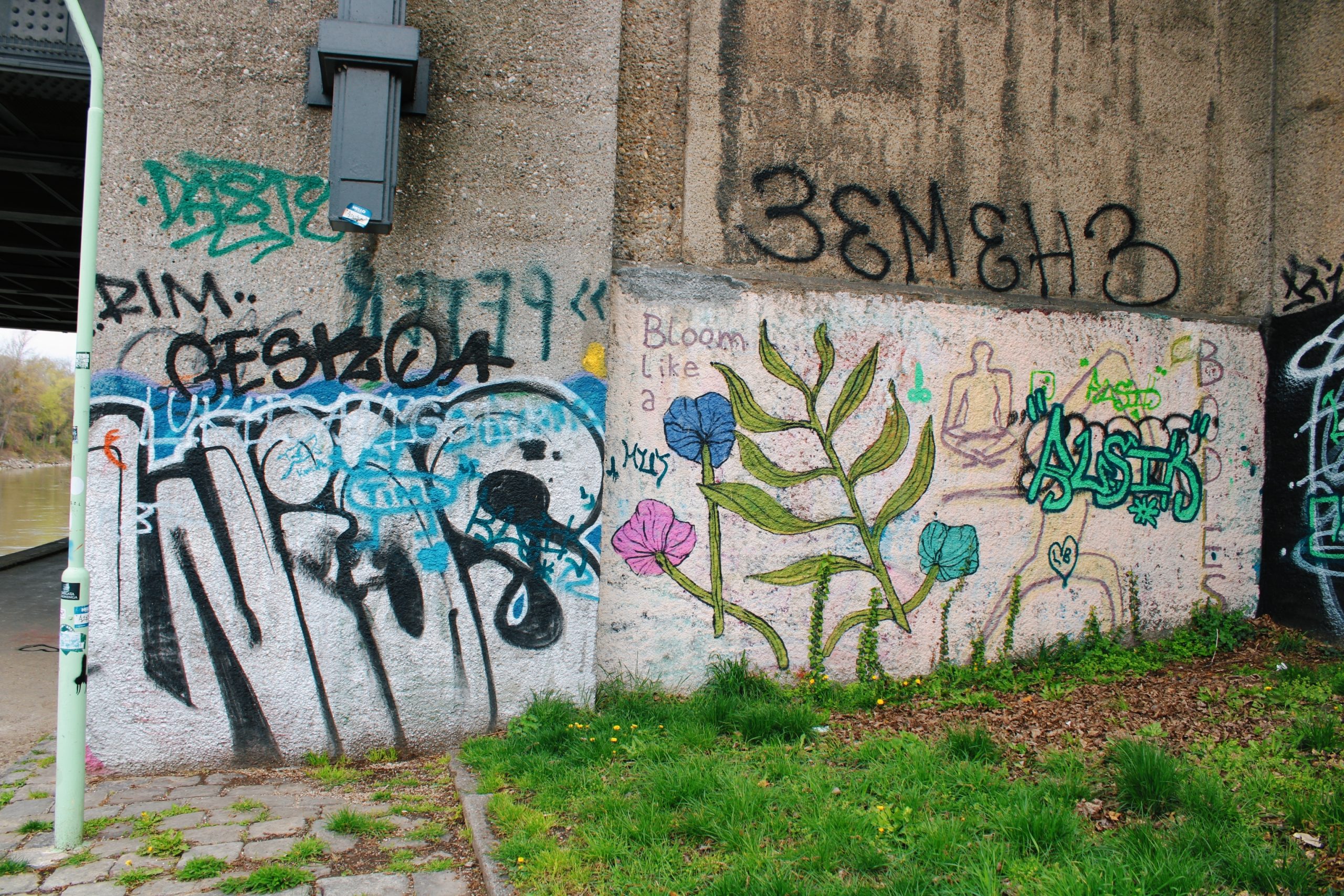
If you’ve been to Vienna before, you must be familiar with all those colorful graffiti and murals scattered across the city. These pieces of urban art give the Austrian capital a distinct atmosphere and add to its natural glamour. But why are there so many of them? Let’s explore the history of Vienna street art and discover the connection between graffiti and being Viennese.
Key Points
- Urban art in Vienna began in the early 20th century, linked to social housing in “Red Vienna.”
- Urban art is deeply tied to Vienna’s cultural identity, blending history, politics, and creativity.
- Street art today continues to thrive with festivals and initiatives supporting the scene.
Graffiti vs. Street Art: What is the difference?
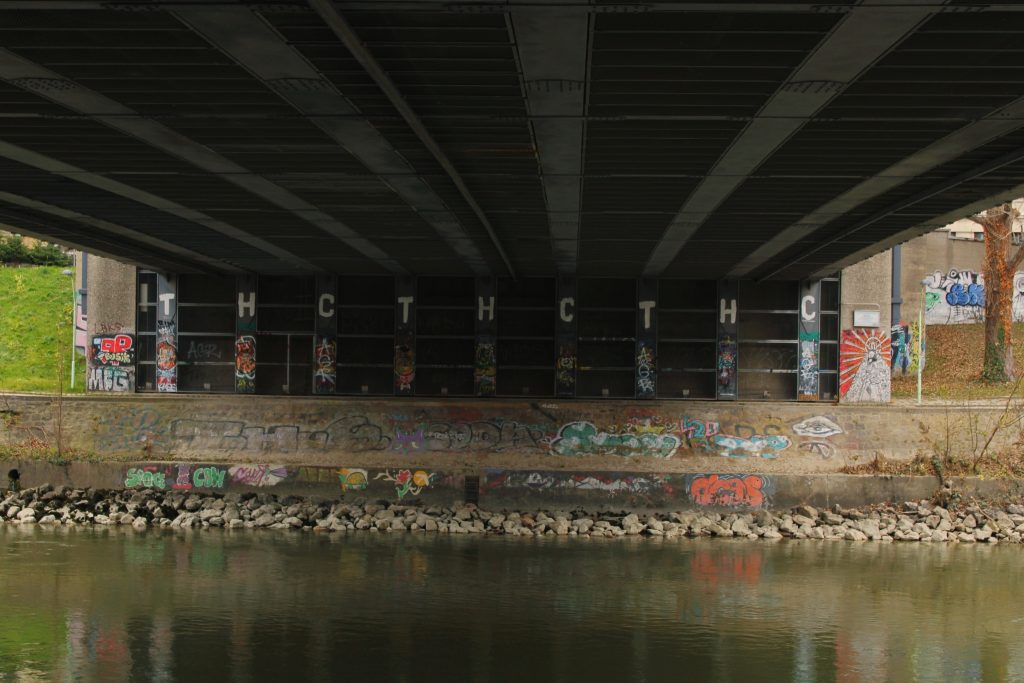
Before delving into the main question, let’s understand the difference between three terms I’ll use throughout this post: graffiti, street art, and urban art.
Graffiti, a word we are all familiar with, is often used interchangeably with street art. In fact, today, distinctions between both art forms are quite blurry and most artists navigate fluidly between the categories. Yet, there are still traditional differences that set graffiti and street art slightly apart.
The key distinction lies in the messaging and the materials used. Graffiti commonly uses spray painting and creates imagery for social commentary. Street art, on the other hand, incorporates a richer variety of media, focusing on the artistic aspect of the practice.
Also, despite sharing public spaces as canvases to reach a wide audience, graffiti remains less socially acceptable than street art, which is more tolerated, and even encouraged.
Regardless of these differences, both concepts stand under the umbrella of urban art. So, while graffiti and street art are separate things, they are both forms of urban art.
Why Is There So Much Street Art in Vienna?
No matter what the definition is, both forms of urban art aren’t unusual things to see in Vienna. So, let’s dive into our question: “Why is there so much street art in Vienna?” The answer lies in the city’s history and identity.
Urban Art Throughout Viennese History
The urban landscape of the pre-20th century Vienna was of a striking duality. On one side, there were nobles and bourgeoisie, inhabiting the richest and most charming structures in the city. On the other side, there was the working-class, suffering from poverty and a serious housing crisis.
Following the dissolution of Austria-Hungary, things actually took a positive turn. In 1919, the First Austrian Republic rose and a new era for Vienna began. Between 1918 and 1934, the Social Democratic Workers’ Party of Austria (SDAP) largely controlled the city, marking an era known as “Red Vienna.” And this is where our story truly begins.
Red Vienna and the Rise of Urban Art
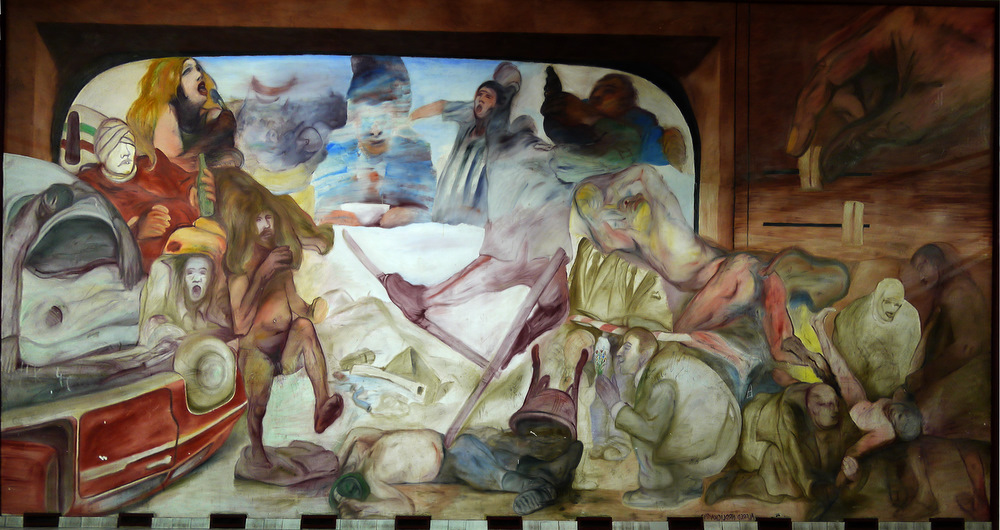
The authorities of Red Vienna tried to solve the housing problem by building social houses, called Gemeindebau. While these buildings provided Viennese with livable spaces, they also served as canvases for the city’s artists. Young Austrian artists, including Alfred Hrdlicka, Fritz Wotruba and Hans Staudacher, decorated the walls and courtyards of Gemeindebaus. This was the birth of Vienna’s urban art scene.
The Austrian civil war in 1934 put the kibosh on social housing constructions for a decade. The effort kept on after the Second World War — and so did urban art. For the following decades, artists colored every corner of Vienna with murals and graffiti, adding to the city’s distinctive charm and cultural identity.
Future of Urban Art in Vienna
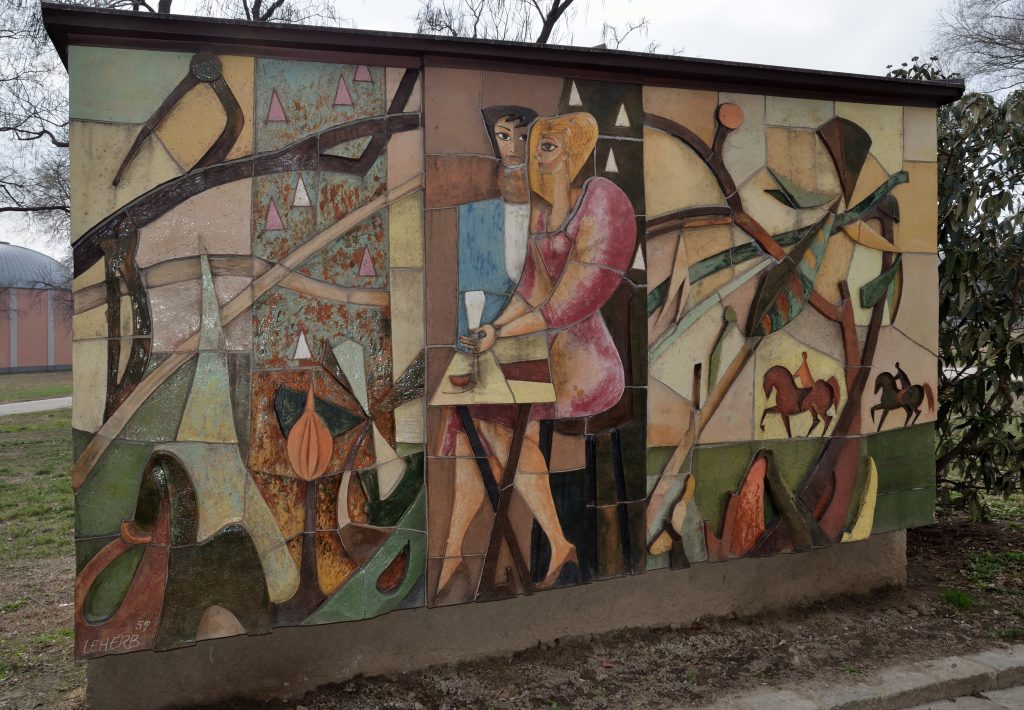
In the decades following the 1970s and 1980s, social housing efforts slowly decreased. Yet, the urban art scene not only endured but thrived. The emergence and spread of tagging, along with other forms of graffiti wall art in the USA, influenced many European artists, including those in Austria. Soon this new form of art was everywhere in Vienna, with many famous graffiti artists beginning to use public spaces to mark their names.
Today, Vienna celebrates its artistic nature through various institutions and festivals. Kunst im öffentlichen Raum Wien (KÖR), founded in 2004, aims to reintroduce the city’s public spaces as artistic canvases. The initiative Wiener Wand offers designated walls across the city to young graffiti artists to support the graffiti scene. And the Calle Libre Street Art Festival, one of the most prominent street art festivals in Central Europe, has been taking place in Vienna since 2014.
Street Art as a Manifestation of Being Viennese
Its rich and unique history makes Vienna a distinct melting pot. Once the capital of a glorious empire, the Austrian capital has been a prominent destination for migrants and asylum-seekers for centuries. This diversity enriched Vienna’s culture and art scene, which is mirrored in the urban art adorning the city’s public spaces.
Orderly streets and neat buildings of Vienna might look stern, even cold, at first sight. However, murals, graffiti, and tags on these walls ease the city’s proud aura, giving it a more colorful appearance. I believe this reflects the city’s true nature very well: serious yet artistic. So, I guess it’s right to say that Vienna street art is an integral part of the city’s own identity.
Political Messaging: Graffiti as Ideological Statement
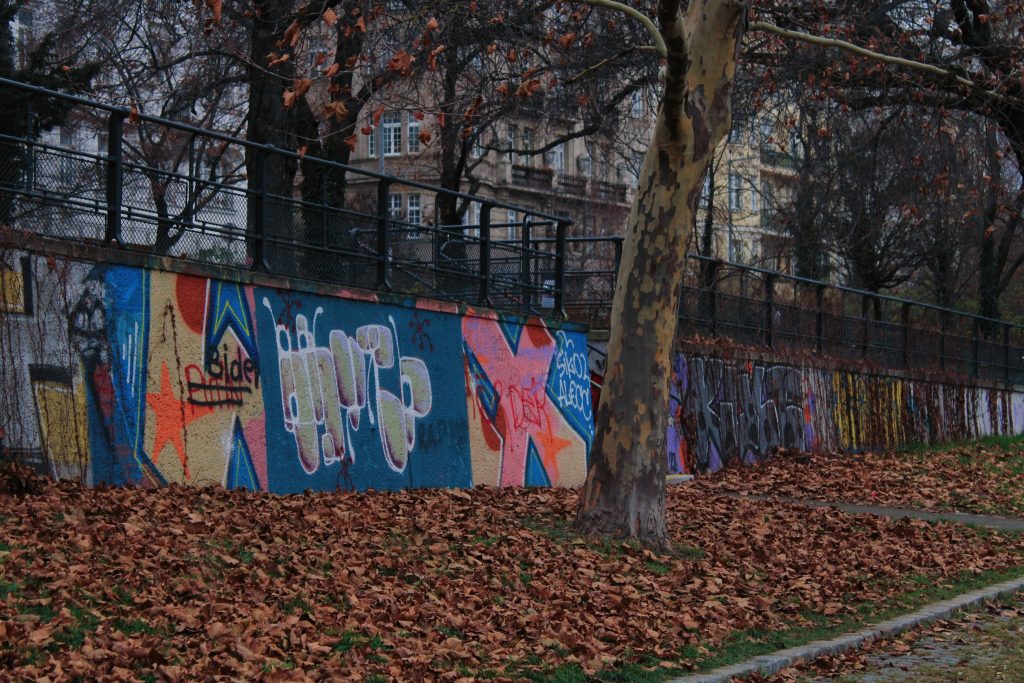
Politics plays an undeniable role in Vienna’s art and culture. Museums in the city, as well as exhibitions and even popular landmarks, illustrate different political currents throughout the city’s past. Of course, this political nature is also present in Viennese urban art.
Walking along the Donaukanal can uncover a vast open-air museum of graffiti. Political slogans and social messages, such as “F*ck Cars!” “ACAB” or “Eat the Rich” are everywhere along the canal. As graffiti art is common among all political factions, messages advocating opposing ideas are often found right next to each other.
Artistic Expression: Urban Art Beyond Politics
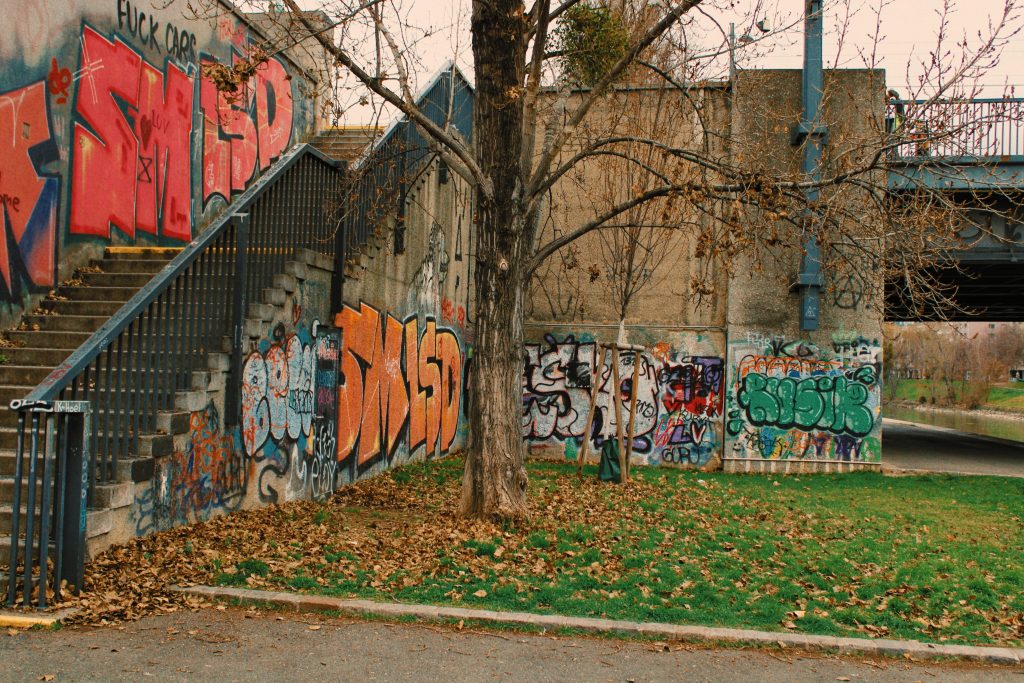
However, Viennese urban art isn’t limited to political statements – it also serves as a powerful form of self-expression. Pieces of art with pop-culture references, colorful imagery and masterful portraits all adorn the streets of Vienna, allowing the passerby to bask in creativity. The city is home to a myriad of murals and graffiti anyone can enjoy.
Whether you’re strolling through Vienna’s streets or visiting a landmark on your itinerary, chances are you’ll come across many examples of creative, awe-inspiring artwork. When doing so, remember the complex history and cultural significance of those pieces. Take a picture to memorise them or take a closer look to catch the intricate messages behind them.
Conclusion
So, why is there so much graffiti in Vienna? Because it’s a practice rooted in Viennese society through history. It helps artists from all walks of life to voice their ideas and opinions in the most artistic way possible — which is very Viennese. In fact, few things capture Vienna’s unique blend of heritage and creativity as powerfully as awe-inspiring murals painted on old walls.


Leave a Reply